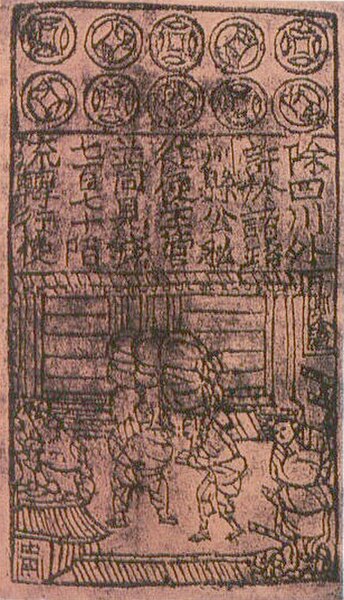Stockholms Banco was the first European bank to print banknotes. It was founded in 1657 by Johan Palmstruch in Stockholm, began printing banknotes in 1661, but ran into financial difficulties and was liquidated in 1667. Stockholms Banco was the immediate precursor to the central bank of Sweden, founded in 1668 as Riksens Ständers Bank and renamed in 1866 as Sveriges Riksbank, which is the world's oldest surviving central bank.
Banknote of one hundred daler issued by Stockholms Banco and signed by Johan Palmstruch, 1666
A banknote—also called a bill, paper money, or simply a note—is a type of negotiable promissory note, made by a bank or other licensed authority, payable to the bearer on demand. Banknotes were originally issued by commercial banks, which were legally required to redeem the notes for legal tender when presented to the chief cashier of the originating bank. These commercial banknotes only traded at face value in the market served by the issuing bank. Commercial banknotes have primarily been replaced by national banknotes issued by central banks or monetary authorities.
Song dynasty Jiaozi, the world's earliest paper money.
A Yuan dynasty printing plate and banknote with Chinese words.
Marco Polo described the use of early banknotes in China to Medieval Europe in his book, The Travels of Marco Polo.
The first paper money in Europe, issued by the Stockholms Banco in 1666.




